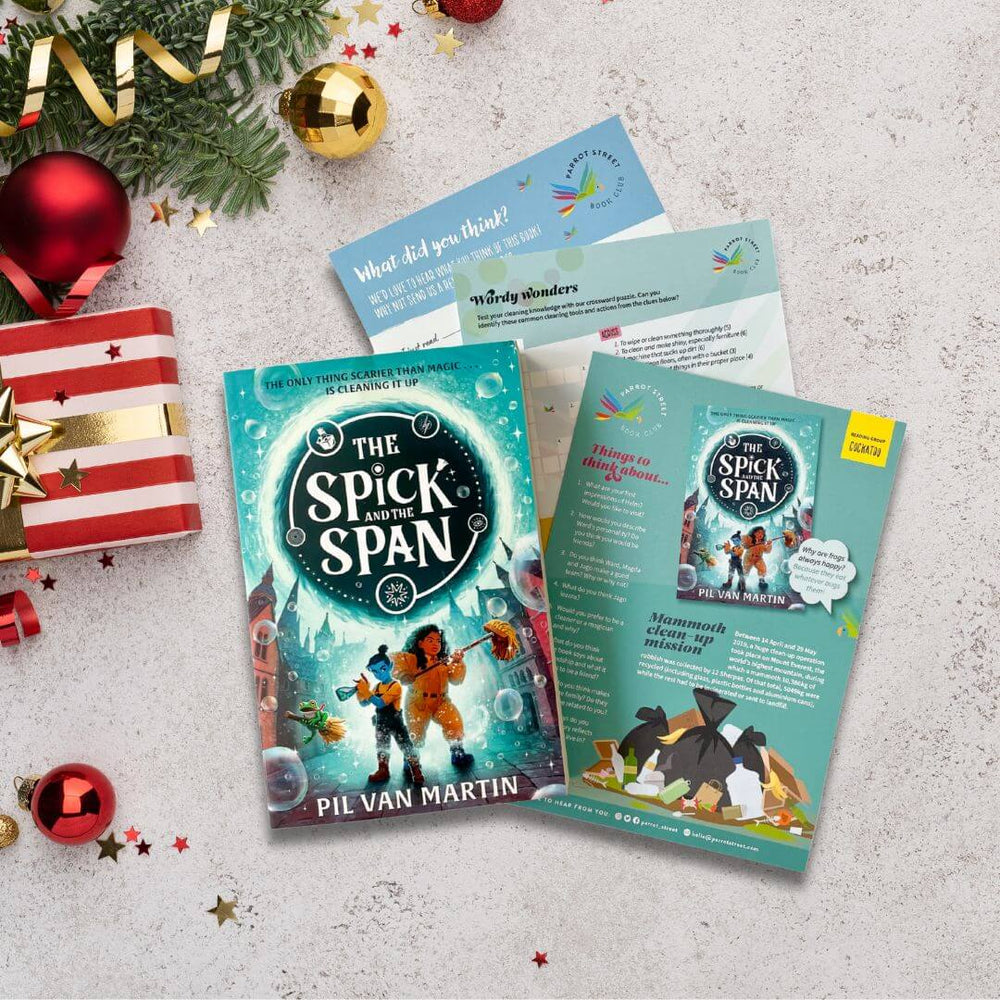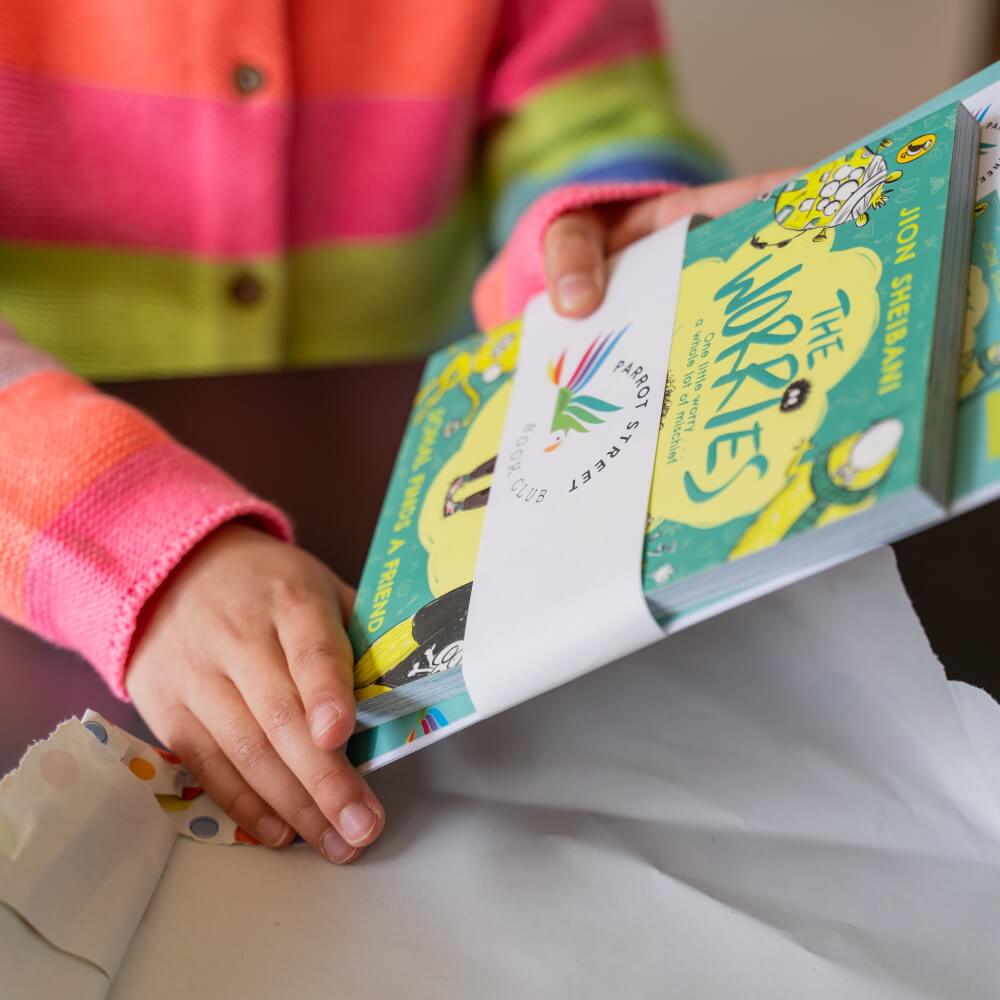Tania Unsworth on The Time Traveller and the Tiger and historical fiction for kids

This month our Cockatoo subscribers are travelling around the world to India and back in time to 1946 with a book that combines fantasy, adventure and historical drama. It’s a fantastic read, rich in social and environmental themes, with something for everyone. We’re thrilled to be sharing it with our subscribers. Here author Tania Unsworth tells us what inspired the book and which historical fiction books she would recommend you read next.
What inspired you to write The Time Traveller and the Tiger?
I’ve always loved tigers, ever since I was little. I read The Jungle Book when I was a kid and although I enjoyed it, I felt very sorry for Shere Khan – the tiger in the story. Shere Khan is supposed to be the evil character, shunned by all the other animals in the jungle because he hates human beings and will attack them whenever he can. I felt this was incredibly unfair because I thought that Shere Khan was in the right. If I was a tiger, I’d probably hate humans too!
Did you travel to India when you were researching the book?
I went to two tiger reserves in Central India: Kanha and Bandhavgarh. Although I’d read a lot about tigers and watched documentaries about them and visited them in zoos, I thought I needed to see them in the wild before I could write my story. I had a feeling they might seem very different in their natural habitat, and I was right. A wild tiger is nothing like a zoo tiger. To glimpse one - even from far away – is enough to stop your heart.
Are any of the characters inspired by real people?
My grandparents were born in India when it was ruled by the British (they left when India gained independence in 1947). As a kid, I was fascinated by their stories and all the Indian knick-knacks in their house. It felt as though they came from a very distant world and time. Which of course, they did.
I also think I might have a few things in common with my main character, Elsie. Like her, I’m always making up stories and wishing I was a heroine. And like her, I have a truly terrible singing voice (it was so bad I wasn’t allowed to sing in my school choir). But unlike Elsie, I’m not a particularly cheerful person. And my spelling is mostly good. Except for words like ‘occasionally’. (I know it looks like I’ve got that right, but spell check had to come to my rescue. What I actually wrote was ‘ocaissionaly.’)
Do you have a favourite place to write?
I write in a small room on the top floor of my house. It’s full of rather childish things. A Lego Taj Mahal, a map of Narnia, a couple of treasured dolls, a red woollen cape I wore when I was three, a lamp in the shape of a mouse, a collection of toy animals… Perhaps it’s no surprise that I write for children!
Why did you choose to write books for children?
I started out writing for adults and then realized that almost all the books that changed my life I read before I was an adult myself. Children are the best readers. They immerse themselves in stories in a way that most grown-ups have forgotten how to do.
What was your favourite book as a child?
I liked a LOT of books. Myths, fairy stories, anything to do with King Arthur or Vikings or animals or magic wardrobes or boarding schools or orphans left in the care of evil guardians… I could go on.
Which historical fiction books for children would you recommend our subscribers read next?
In terms of classics, you can’t do better than The Story of the Amulet by E. Nesbit. Or Henry Treece’s wonderful trilogy Viking Dawn, The Road to Miklagard, and Viking Sunset. For something written more recently, I highly recommend Circus Maximus: Race to the Death by Annelise Gray. Set in Ancient Rome, it’s the first book of a potentially brilliant series.
If you could travel back in time, where would you go and what would you do?
This is such a difficult question! But I think most of all I would like to go back to 1831 and sneak onto HMS Beagle with Charles Darwin for his epic voyage around the world. What could be better than travelling under sail for years and years, marvelling at the wonders of nature? I would assist the great man in some humble way – carrying his butterfly net, perhaps. Or sketching various beetles and types of sloth (I’m guessing they would be relatively easy to draw because they don’t move around very much). Of course, it would be difficult to resist dropping a few hints during the voyage. Hard not to say something like, “Mr. Darwin Sir, this is just a random thought, but what if everything on earth sort of evolved through a process called… I don’t know… merely speaking off the top of my head here… Natural Selection?”
And then, with a modest little smile, I would return to drawing sloths.
JOIN OUR EMAIL LIST
Children's book news straight to your inbox
We love sharing product updates, book recommendations, children's activity ideas and special offers via email.














